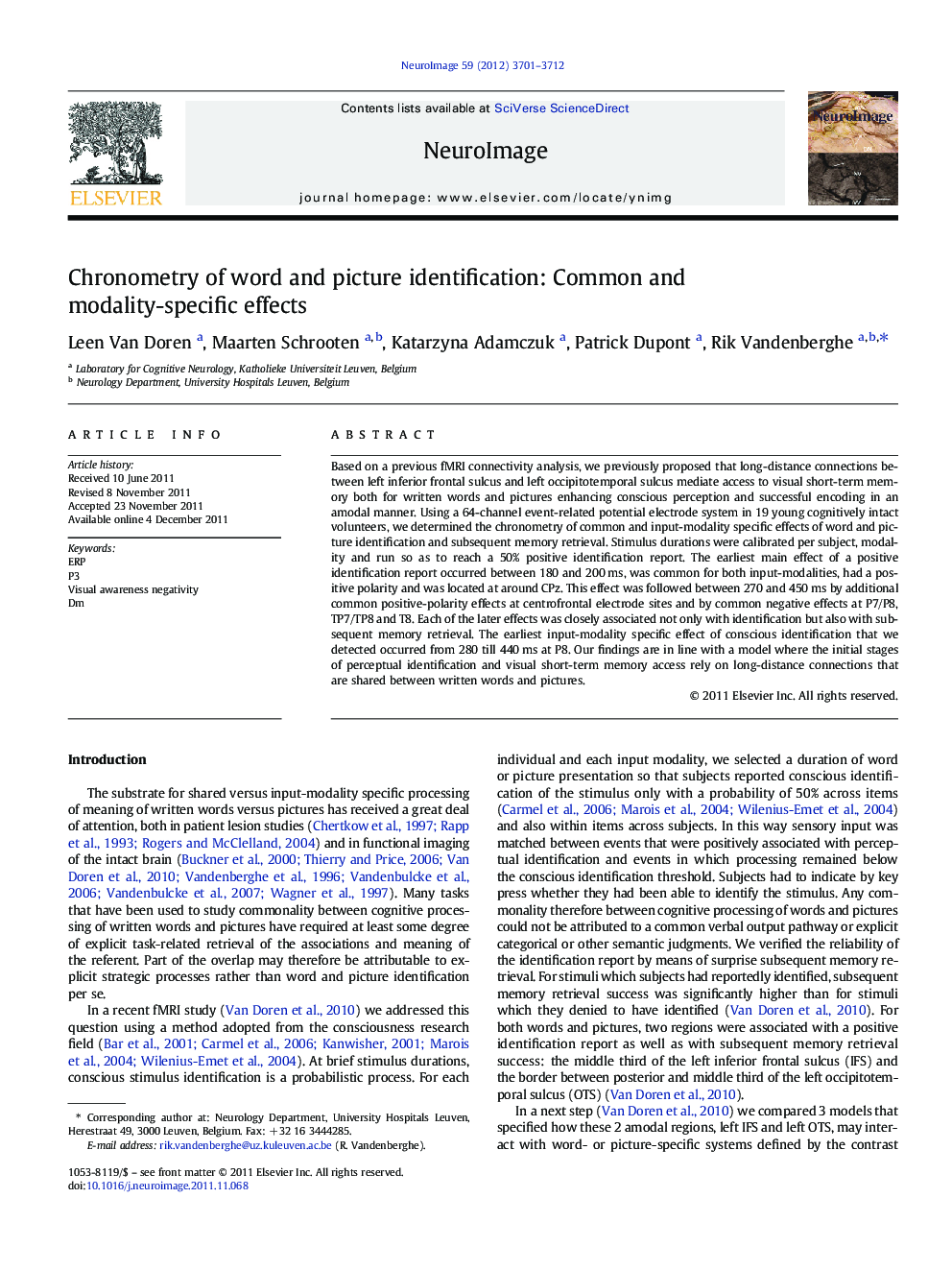| Article ID | Journal | Published Year | Pages | File Type |
|---|---|---|---|---|
| 6032788 | NeuroImage | 2012 | 12 Pages |
Abstract
Based on a previous fMRI connectivity analysis, we previously proposed that long-distance connections between left inferior frontal sulcus and left occipitotemporal sulcus mediate access to visual short-term memory both for written words and pictures enhancing conscious perception and successful encoding in an amodal manner. Using a 64-channel event-related potential electrode system in 19 young cognitively intact volunteers, we determined the chronometry of common and input-modality specific effects of word and picture identification and subsequent memory retrieval. Stimulus durations were calibrated per subject, modality and run so as to reach a 50% positive identification report. The earliest main effect of a positive identification report occurred between 180 and 200Â ms, was common for both input-modalities, had a positive polarity and was located at around CPz. This effect was followed between 270 and 450Â ms by additional common positive-polarity effects at centrofrontal electrode sites and by common negative effects at P7/P8, TP7/TP8 and T8. Each of the later effects was closely associated not only with identification but also with subsequent memory retrieval. The earliest input-modality specific effect of conscious identification that we detected occurred from 280 till 440Â ms at P8. Our findings are in line with a model where the initial stages of perceptual identification and visual short-term memory access rely on long-distance connections that are shared between written words and pictures.
Keywords
Related Topics
Life Sciences
Neuroscience
Cognitive Neuroscience
Authors
Leen Van Doren, Maarten Schrooten, Katarzyna Adamczuk, Patrick Dupont, Rik Vandenberghe,
